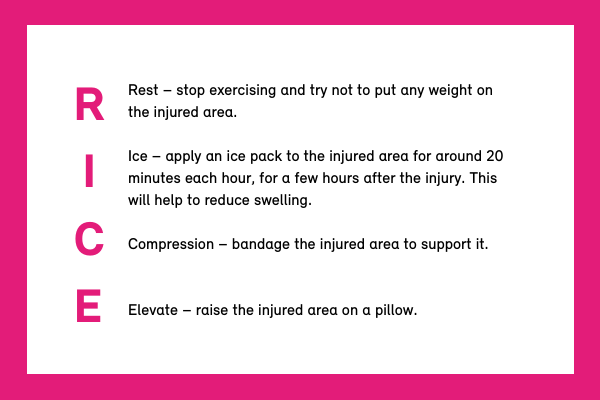Home has become the new gym for many of us as we adapt to the new social distancing rules set out by the UK government in response to Covid-19.
Ways to exercise at home
In a previous blog, we discussed different ways that all of us can continue to exercise with the new restrictions in place. As we explained, it is vital for our musculoskeletal fitness that we don’t just flop on the sofa but that we continue to move around and exercise.
One of the features of the pandemic, so far, is the creative ways that people are finding to exercise at home – from using garden furniture for goal shooting practice through to practicing their golf swing with online coaching from a professional golfer. There are many online exercise classes that you can join in with, helping to ensure you can keep moving and keep fit.
Risk of injury
One of the drawbacks of exercising at home, however, is that we tend to feel very relaxed in our home environment and this may make us a bit slapdash when it comes to the way we exercise.
There may be a temptation to exercise without the correct clothing, maybe in bare feet, or not to bother with warm up or cool down exercises.
But the result of this can be injury and the last thing any of us want to do right now is put unnecessary pressure on healthcare services.
Top tips for exercising safely at home
At W27 we see the results of training-related injuries and hear people’s frustration at not being able to exercise until they are fully healed, which can take weeks or even months.
So, it’s worth reminding ourselves of some of the main ways of exercising safely and avoiding injuries. Here are our top tips:
- Strengthen your muscles and build flexibility – Sprains and strains can occur when running, jumping or changing direction suddenly. Many could be avoided by doing conditioning exercises that build muscle strength and flexibility.
- Wear proper running shoes – This means your body will be subjected to less stress and it may help you avoid injuries such as Achilles tendonitis.
- Have some professional coaching – This will teach you the proper technique which could help you to avoid injury. If you play golf or tennis, for example, an incorrect swing could leave you at risk of golfer’s elbow or tennis elbow, which cause pain on the inside and outside of the elbow respectively. It may be less easy to get coaching right now, due to social distancing, but take a look to see if there is anything available online.
- Stretch before and after exercise – Stretching prior to exercise warms up the muscles and helps prevent injury, as cold muscles are more prone to damage. Stretching afterwards can help to increase flexibility.
- Allow your body to rest – You can do a great deal of damage by forcing your body to exercise when you are tired. Learn to listen to your body. Stop when you are tired and don’t push yourself to exercise every day.
- Don’t ignore an injury – Continue to exercise on an injured limb can cause further damage and may delay your recovery. If you experience pain while exercising you should stop.
Treating an injury at home
If you suffer a minor injury at home you can use the RICE method to treat it – rest, ice, compression and elevation above the level of your heart.

Diagnosing more serious injury
However, if the problem persists or is severe, you will need medical attention. You may be referred for diagnostic imaging tests, such as X-ray, ultrasound, MRI or CT scans. This allows the doctor to see what is causing the pain and to recommend an appropriate treatment plan.
Just be mindful that any admissions to A&E, or to a GP, could mean a longer waiting time to be seen, as well delays in any treatment – even more reason to stay safe and not do anything that could cause yourself an injury, for your own sake and for the NHS.
Whatever type of exercise you are doing it is important to observe current government guidelines right now to prevent the spread of Covid-19, including rules on social distancing. You can find details here: https://www.gov.uk/coronavirus
RADIOLOGIST | MANCHESTER, WIGAN, CHESHIRE + MORE
W27 provides fast, accurate diagnosis and treatment of musculoskeletal symptoms and conditions using the latest state-of-the-art imaging facilities. We also offer therapeutic injections to help relieve joint pain.
For your appointment there is a choice of locations:
The John Charnley Wing, Wrightington Hospital – Hall Lane, Appley Bridge, Wigan, WN6 9EP
HCA Manchester Institute of Health & Performance – 299 Alan Turing Way, Manchester, M11 3BS
Euxton Hall Hospital – Wigan Road, Euxton, Chorley, PR7 6DY
The Spire Manchester – 170 Barlow Moor Road, Didsbury, Manchester, M20 2AF
European Scanning Centre – 10-11 Bulstrode Place, London W1U 2HX
The OrthTeam Centre Ohm Building – 168 Barlow Moor Road, Manchester, M20 2AF
Information about our Fees can be found here.
If you have any questions or would like to discuss your options with a specialist, please contact the team to book an initial consultation.









